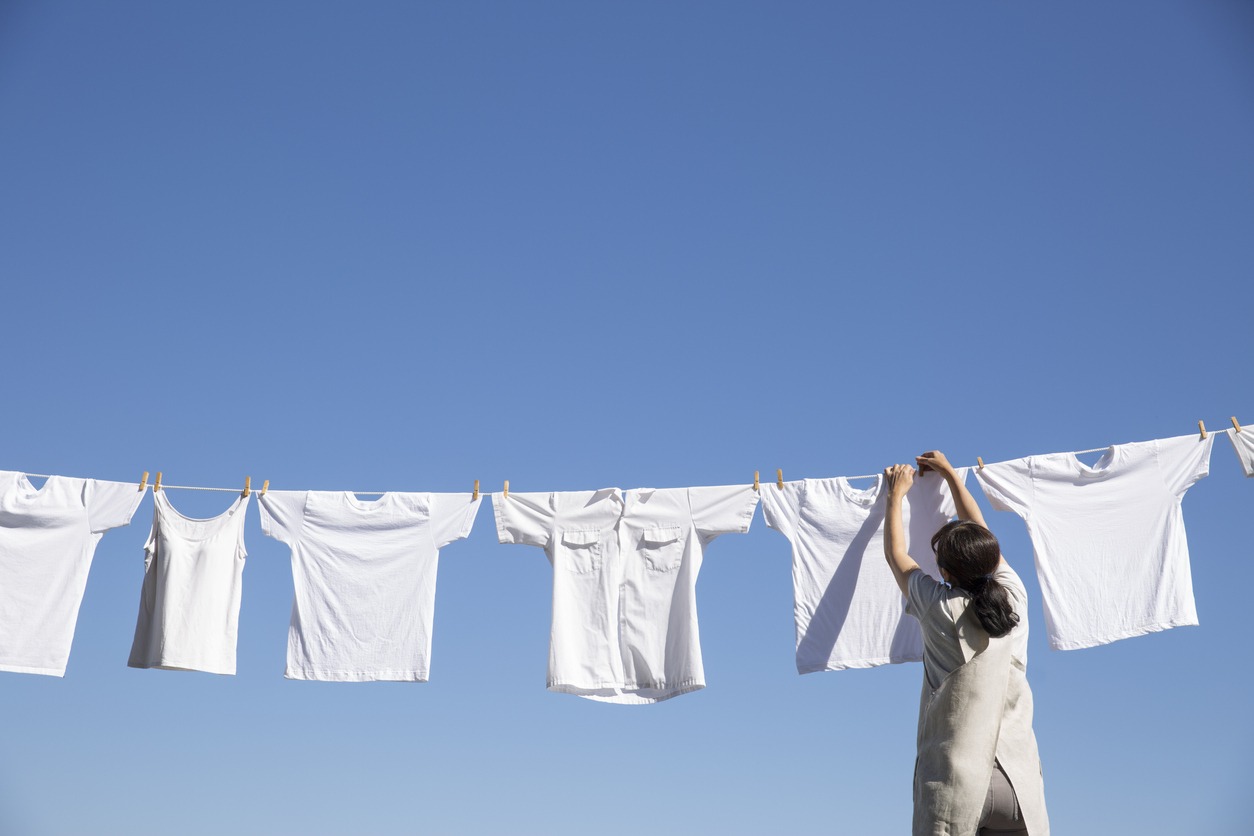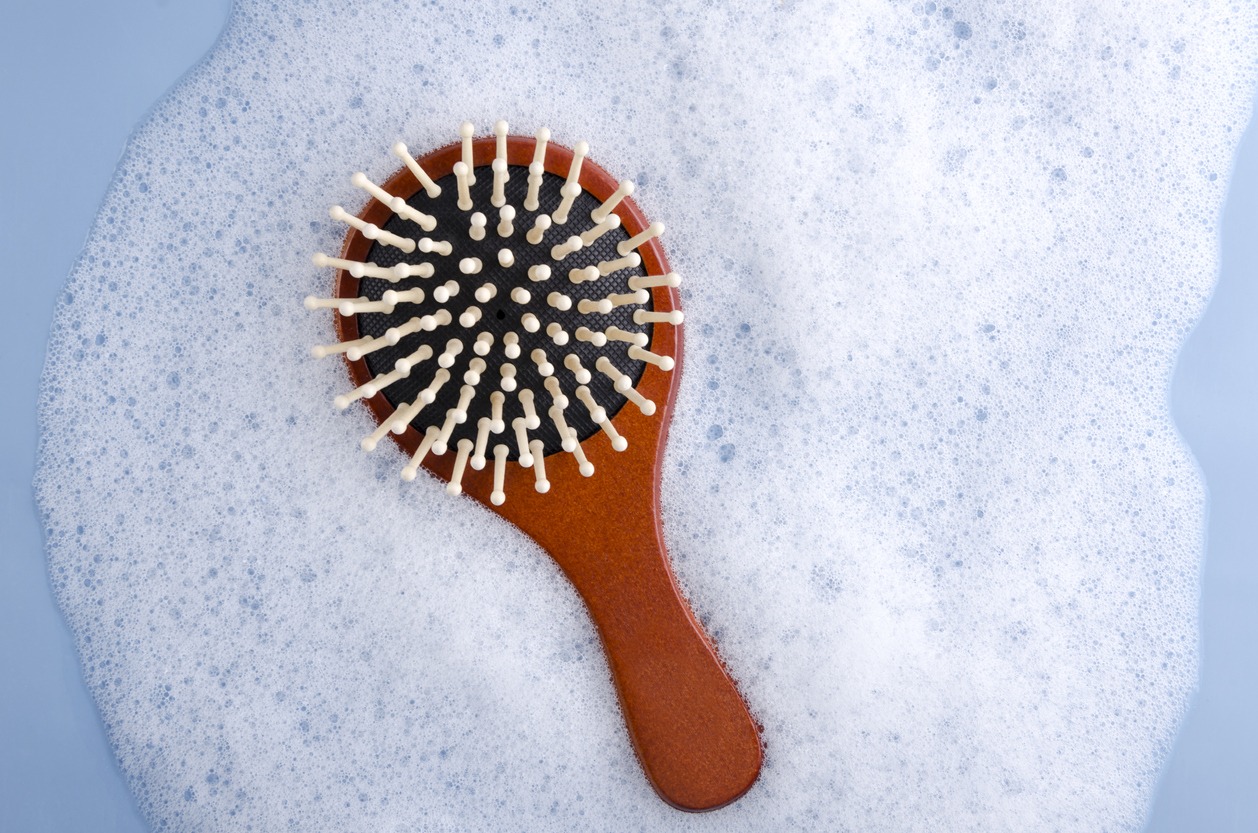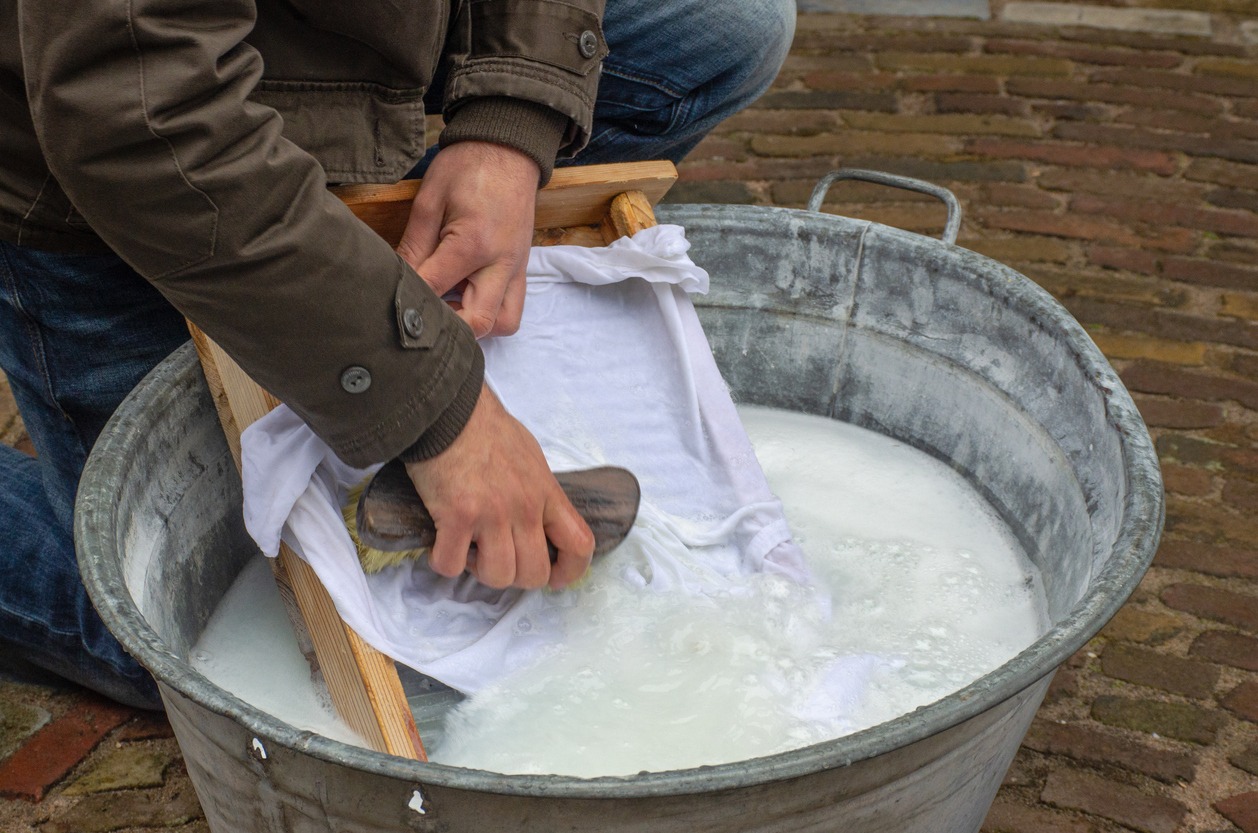Many of us, when we think of living off the grid, picture a small house on some land, powered by the sun, with food growing everywhere. This is the image that comes to mind for many of us. The many hours of work that need to be done to keep the homestead operating smoothly rarely enter our minds as mental images. One of these drudgeries is doing the laundry.
If you don’t have the right tools, doing the laundry can quickly become a tedious daily chore that can eat up more than an hour of your time. You will require some variation of a basin filled with soapy water, an agitator such as a washboard, plunger, or brush, a wringer to remove excess water after rinsing, and a clothesline to hang your clothes to dry to wash and dry them off-grid.
1. Make Use of a Brush and a Bucket
Let’s begin with the option that requires the fewest resources and is the most fundamental: washing dishes by hand with a few buckets and a scrub brush. You can also use a washboard for scrubbing, which will make it much simpler for you to remove dirt from clothes. This will come as a great convenience to you.
The rules of washing apply to this scenario as well. Before you can start washing your clothes in a bucket together, you will first need to sort them according to color or level of dirtiness. Depending on the amount of laundry you have, you may need to use two or three buckets or carry out the process a total of two or more times. If you have a lot of clothes to hand wash, it is always best to choose a large bucket because it will make the process of hand washing the clothes easier.
The option involving the bucket and the brush does, of course, come with a few drawbacks. Because you will be hunched over on the ground, your back may experience some discomfort as a result of this position. The solution to this problem is to put your buckets on a table or countertop so that you can work while standing up straight rather than stooping over. In addition, emptying the bucket of water after a wash or rinse can be a laborious task, particularly because of the weight of the water itself.
Another step that requires your strength and effort is squeezing the wet clothes to speed up the drying process. Because there is a significant amount of splashing involved, it is also typically a fairly wet job. This can be enjoyable when the weather is warm, but if the weather is wet or cold, you may want to limit the amount of water that comes into contact with your skin.
2. Make Use of a Plunger
One more low-cost strategy for doing laundry off the grid is the use of a hand plunger. You have the choice between using a hand plunger that is similar in appearance to a toilet plunger but is brand new or a plunger that is designed specifically for cleaning clothes when you employ this manual washing technique. Put the clothes in a bucket with water and laundry detergent, then place the plunger on top of the clothes in the bucket. This will allow you to use the plunger to clean the clothes.
The next step is to simulate the operation of a conventional electric washing machine by pressing down and pulling to begin the process of washing and cleaning the clothes. The ability to launder one’s garments while standing up rather than stooping or bending over is one of the advantages of selecting this alternative.
Because the hand plunging won’t be able to target specific dirty spots, you may still need to brush some more soiled or stained clothes than others if you choose this option. The disadvantage of this choice is that it may still be necessary. Soaking the dirty clothes for a longer period than the other loads of laundry will produce the best results.
3. Washboard
In addition to the more traditional materials of wood and metal, one can also find modern versions made of silicone. They are even sold with decorative artwork so that when they are not being used, they can serve as an attractive addition to the interior of a home.
Washboards perform a function that is analogous to that of the bucket and brush option. You will apply your soap directly to your washboard, and then optionally to the areas of your clothing that are the dirtiest, as opposed to soaking your dirty clothes in soapy water first. One difference is that this method does not involve soaking your dirty clothes first.
After that, you will work your clothes by “scrubbing” them up and down on your washboard until you have completely washed the entire garment or until you are satisfied that you have touched the dirtiest parts of the garment. After you have placed it in the water to be rinsed, you will be able to move on to the next item in your bucket. To assist in the removal of stains, you could try soaking particularly dirty items for the entire night.
4. Hand Cranked Washing Machine
There are some pretty amazing hand-cranked washing machines available on the market today. Prepare yourself for a workout of the upper body if you choose to use one of these hand-cranked washing machine options. The vast majority of people appear to think that this is a good option; however, it does not perform as well as a conventional washing machine would.
To facilitate the cleaning process, it is recommended that you let your laundry soak for a few hours or overnight. The fact that this alternative does not require you to bend over is one of its many advantages.
5. Make Use of a Washtub and Wringer
Another fantastic way to wash clothes without using the grid is to do it in the manner of one’s great-grandmother. This model of washer enjoyed widespread use in the United States in the decades immediately following World War II. In today’s times, people refer to them as the “Amish Way,” and many Amish households power their wringer washers with diesel generators.
In addition, the Amish community is known for its simplicity. Because wringing wet laundry out by hand can be painful for the hands and wrists, this method may help reduce the number of times those injuries occur. You can easily remove water from wet clothes with the assistance of a wringer, which will allow you to dry them more rapidly on a clothesline or clothes rack. Just be careful not to use the wringer on any delicate items of clothing because it could potentially ruin them.
You need to be able to wash your clothes by hand if you don’t have access to a washing machine, which is something you need to know if you want to be self-sufficient or if you plan to go on a trip away from civilization for an extended period. It might seem inconvenient at first, but keep in mind that people have survived for years without access to electricity or household appliances. For more information on the other items that you should have for living off the grid, you can check out our Guide to the Items You Need to Live Off the Grid.


